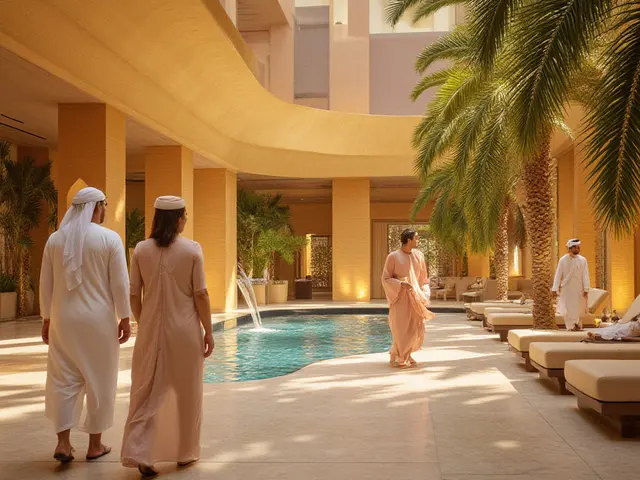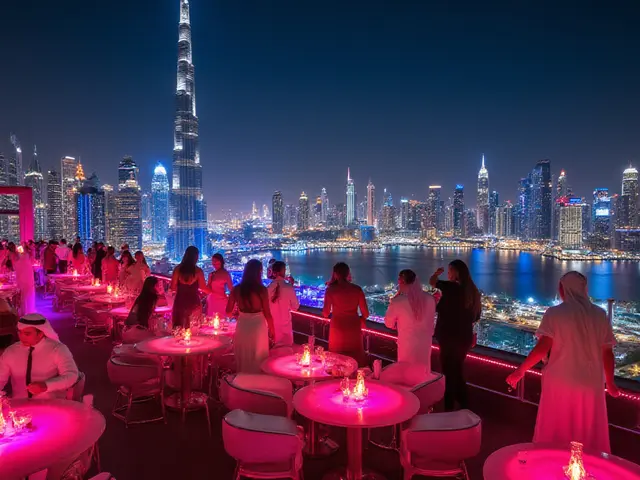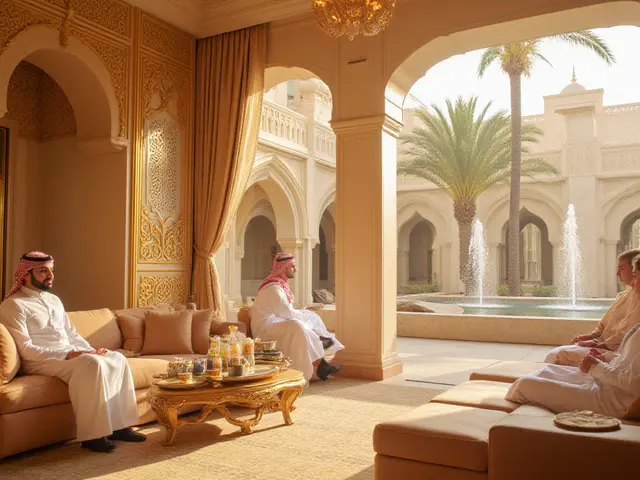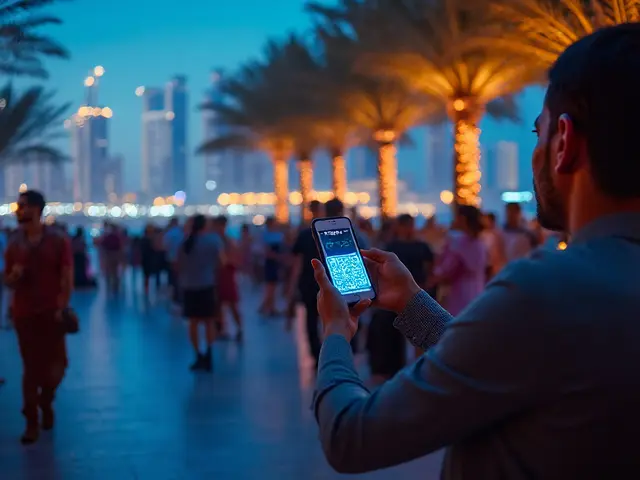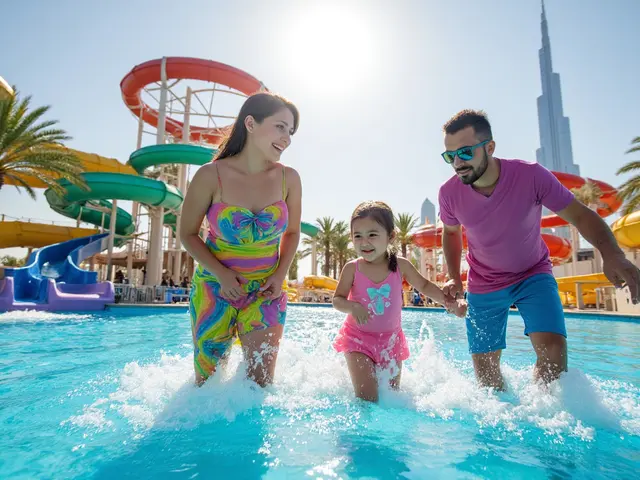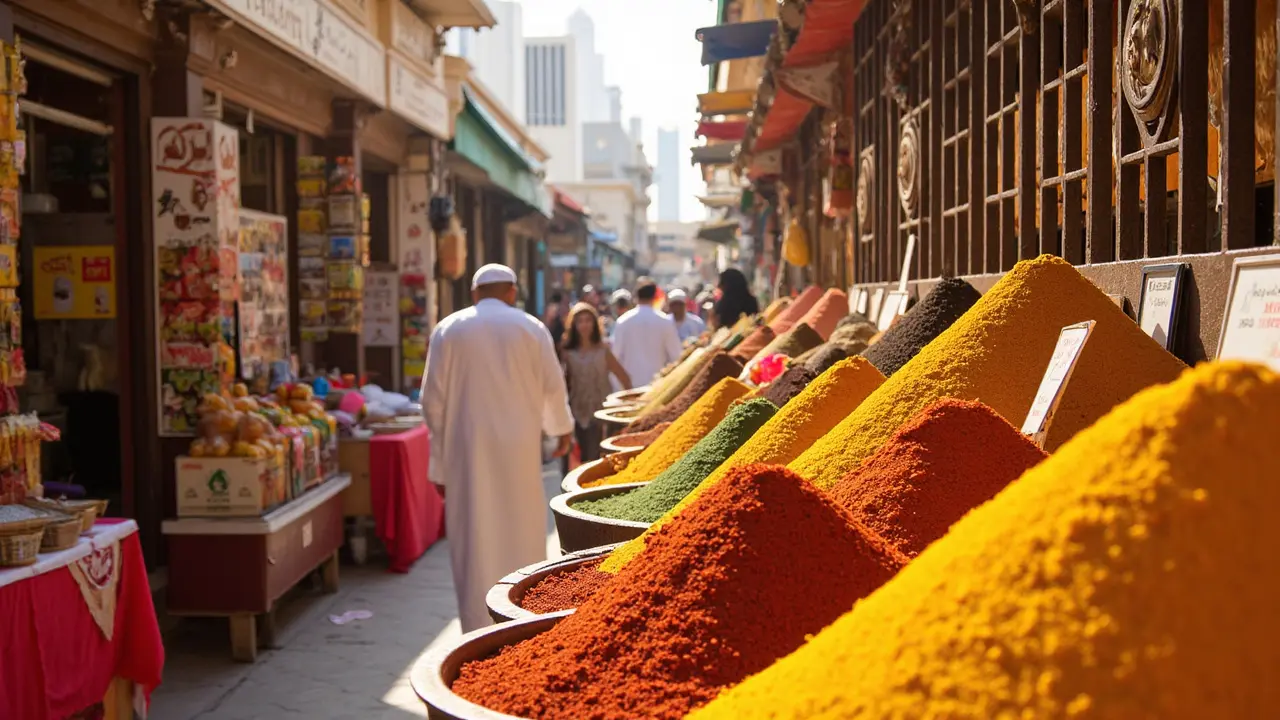
If you live in Dubai, you've probably been wowed by glitzy malls and shiny skyscrapers—but the real heart of the city beats somewhere else. Want to get under the surface and take home memories that won’t just blend into your Instagram feed? Start with cultural experiences that are part of daily life here. Dubai's culture is full of contrasts: ancient traditions right next to futuristic innovation, old neighborhoods minutes away from the world’s tallest building.
Don’t just settle for the obvious. Have you bought saffron at Deira Spice Souk, or tried Karak chai from a street vendor in Satwa? Have your kids ever seen a falcon up close or been stunned by drummers at Al Seef? Whether you’re new in town or have lived here for years, there’s always something that can still surprise you. From sharing a meal with Emiratis at a majlis, to losing yourself in the music of Dubai Opera, you’ll find that the city isn’t just a place where people work and shop—it’s a place to slow down and really connect.
Stick around and I’ll break down a list of cultural adventures, complete with practical tips and details, that every Dubai resident and visitor should try at least once. You won’t just tick off bucket-list items—you’ll get stories you can’t wait to share back home.
- Traditional Bazaars and Souks
- Desert Adventures and Bedouin Heritage
- Emirati Cuisine and Authentic Eateries
- Arts, Festivals, and Local Performances
- Mosques, Museums, and Heritage Sites
Traditional Bazaars and Souks
It doesn't get more real than wandering through Dubai's old souks. The most famous is the Dubai culture hotspot, Deira Gold Souk. With over 380 retailers, it’s a gold lover's paradise, but you don’t have to buy—just seeing floor-to-ceiling displays of bracelets and necklaces is a wild experience. Next door, the Deira Spice Souk hits you with a wall of aroma: piles of saffron, dried limes, and rose petals. Haggling here isn’t just okay—it’s expected. Try starting at 60% of the asking price, but always smile, and keep it friendly.
If you haven’t crossed Dubai Creek on an abra (those old wooden boats), you’re missing a classic. It’s the fastest, cheapest ride in Dubai—only AED 1, and in less than five minutes you’ll go from the Bur Dubai side to the Deira souks. If you’re there in the early evening, the cool breeze and sunset views are hard to beat. Don’t be shy to chat with shopkeepers, either. Locals and longtime expats love to share tips or stories about their products—especially if you’re genuinely interested.
Another spot that deserves time is the Textile Souk in Bur Dubai. The selection is endless, from plain cottons to fancy silks, and the tailors nearby can turn fabric into a custom outfit in just one or two days. Pro tip: if you want something unique for Eid, National Day, or just a special night out, bring a photo for inspiration and watch them do their magic.
- Deira Gold Souk: Open daily, 10am-10pm, Fridays after 4pm
- Deira Spice Souk: Best hours are 9am-2pm, 4pm-10pm
- Textile Souk, Bur Dubai: Great for bespoke clothing and gifts
- Creek Abra Rides: AED 1 per trip, cash only
Here’s a snapshot comparing popular souks:
| Souk Name | Main Products | Location | Typical Price Range |
|---|---|---|---|
| Gold Souk | Jewelry | Deira | Market rate, negotiable |
| Spice Souk | Spices, herbs, teas | Deira | From AED 10 |
| Textile Souk | Fabrics, souvenirs | Bur Dubai | Fabrics from AED 20/m |
If you’re with kids, keep them close—these places can get crowded (especially on weekends). And don’t forget, summer can get intense, so bring water and take breaks at nearby cafes. Strolling the souks is a classic way to step into the city’s real rhythm. You’ll go home with a few deals and a much better grip on the flavors and hustle of old Dubai.
Desert Adventures and Bedouin Heritage
Skip the city lights for an evening and head out to Dubai's desert—it's a must for anyone hunting for real cultural experiences. Home to Bedouin tribes for centuries before Dubai's skyscrapers, the desert is where you really get a taste of Emirati roots. This isn’t just about dune bashing in a 4x4. Go for a guided cultural camp set up by tour companies like Platinum Heritage or Desert Safari Dubai, where you can try camel riding, sandboarding, and even get a quick lesson on falconry—a tradition that’s as Emirati as it gets.
Don’t miss a sunset in the dunes. Most camps lay out low tables and carpets where you can eat like a local. A classic Bedouin dinner means grilled meats, flatbread, and dates. Some nights, there are storytelling sessions or oud players, giving you insight into the nomadic lifestyle of the past. Kids, by the way, love the henna painting and the chance to see camels up close (Leander always does!).
| Experience | Best Area | Approximate Cost (AED) | Family-friendly? |
|---|---|---|---|
| Camel Ride | Al Marmoom Desert | 100-200 | Yes |
| Bedouin Camp Dinner | Dubai Desert Conservation Reserve | 350-500 | Yes |
| Falcon Show | Various desert camps | Included in package | Yes |
| Sandboarding | Lahbab Desert | 50-100 | Yes |
Here are a few practical tips if you're planning one of these trips:
- Book through licensed providers—these are usually safer and more authentic.
- Go during the cooler months (November to March). In the summer, the heat can be rough, especially for kids.
- Wear loose, light clothes and comfy shoes. Forget the fancy stuff—you’ll get sandy.
- If you’re vegetarian or have food allergies, let the camp know in advance. They’re used to dealing with picky eaters.
- Don’t leave before the stargazing. On a clear night, the desert sky honestly beats anything you’ll see in the city.
Above all, these trips open up a world far from the malls and highways. In the heart of the Dubai culture, you’ll walk in the footsteps of Bedouins, eat what they ate, and—just for one night—get a sense of what Dubai was before oil and glass towers changed everything.
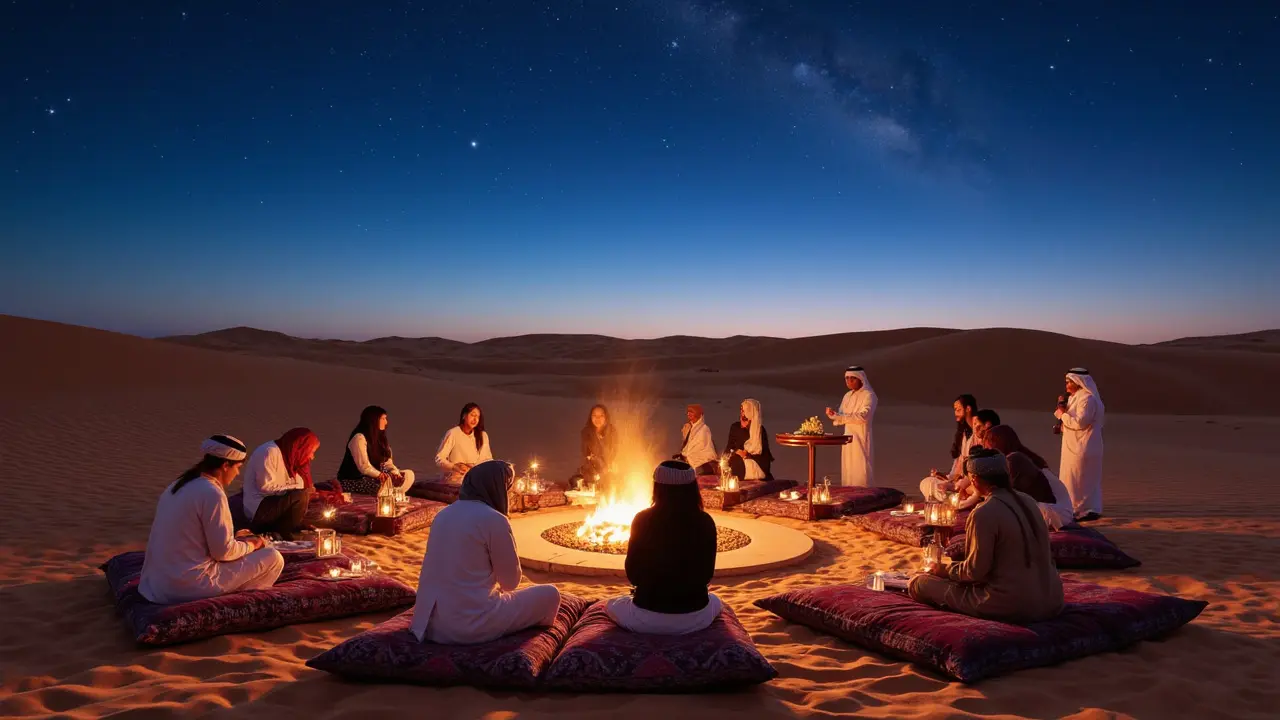
Emirati Cuisine and Authentic Eateries
Ditch the generic international food courts if you want to get a taste of real Dubai. Emirati cuisine is all about flavor, community, and hospitality. Dishes like machboos (spiced rice with meat or seafood), harees (slow-cooked wheat and chicken), and balaleet (sweet vermicelli with eggs) are staples in homes, but you don’t need a local grandma to try them. There are restaurants in Dubai dedicated to sharing these tastes. Ever heard about Al Fanar Restaurant near Festival City? It’s a favorite for both locals and expats. Or check out Logma in BoxPark for a modern spin on old recipes—there’s nothing like their Khameer bread with date syrup.
Some of the best meals in Dubai are served in places you’d miss if you blinked—think humble corner joints or roadside cafeterias. Don’t be afraid to walk into a place where the daily menu is scribbled on a whiteboard in Arabic. You’ll find hidden gems like Al Tawasol in Deira, where the mandi (spiced rice with slow-cooked lamb) comes on a giant communal tray. Bring a group, eat with your hands, and enjoy the real deal.
The local food scene is surprisingly affordable compared to fine-dining restaurants. Here’s a quick look at typical prices for popular Emirati dishes:
| Dish | Typical Price (AED) |
|---|---|
| Machboos | 35-55 |
| Mandi | 30-50 |
| Harees | 25-40 |
| Balaleet | 15-30 |
| Chabab (Emirati pancakes) | 10-20 |
| Karak Chai (per cup) | 2-5 |
If you want to go deeper into Dubai culture, try a traditional majlis dining experience at Sheikh Mohammed Centre for Cultural Understanding in Al Fahidi. They run guided meals where guests sit on floor cushions, share Emirati food, and get honest answers about local traditions—no question is off limits. Reservations fill up fast, especially near UAE National Day and Ramadan, so plan ahead.
- When eating at Emirati restaurants, using your right hand is the norm. Left hand is frowned upon for eating.
- Most authentic spots serve large portions, so sharing is expected.
- Vegetarian? Dishes like saloona (veggie stew) and chabab are usually available everywhere.
- Many eateries operate late, especially during Ramadan evenings.
If you’re eating out with kids, Emirati food is surprisingly child-friendly—my son Leander downs chabab pancakes and grilled meats like it’s nothing. For a quick culture fix, swing by Arabian Tea House in Al Bastakiya for stuffed samosas and endless mint tea under the shade of ancient wind towers.
Even regulars often find new places opening in hidden corners, so keep exploring—your next favorite bite could be in a tucked-away alley in Karama or buzzing Jumeirah terrace.
Arts, Festivals, and Local Performances
Dubai’s vibe shifts into something completely different when there’s a festival or live performance on. There’s always something to look forward to, whether you’re into world-class music, street art, or traditional dances. Let’s get real—no matter your age or background, these events are the best way to soak up the city’s creative energy and see what brings Dubai’s communities together.
Start with a visit to Alserkal Avenue in Al Quoz, the city’s go-to art district. This area is packed with galleries, studios, and pop-ups. Grab a coffee at Wild & The Moon, then walk around and check out everything from Emirati paintings to interactive installations. Every March, the place buzzes even more during Art Dubai—one of the biggest contemporary art fairs in the region. Art Dubai attracts artists, collectors, and curious folks from all over, and tickets usually sell out fast, so plan ahead.
If you’re here in the cooler months (October through March), don’t miss Dubai’s open-air festivals. Sikka Art and Design Festival in Al Fahidi Historical Neighbourhood gives you a peek into Dubai’s past and future. You’ll find graffiti, sculpture, indie films, and even live calligraphy sessions. There’s even stuff for kids, like art workshops and storytimes.
For music lovers, Dubai Opera is a must. Sitting next to the Burj Khalifa, this iconic venue pulls in everything from Swan Lake ballet to blockbuster musicals and Arabic pop stars. Getting tickets is pretty straightforward—use Platinumlist or the Dubai Opera website. If you want something more casual, check out The Fridge in Alserkal Avenue; they’ve hosted over 600 indie gigs so far.
Dubai also loves a good food-and-culture festival. Taste of Dubai, for example, brings together celebrity chefs, cooking demos, and live music in one spot. This event usually runs in March and is perfect for families—my son Leander still talks about that mango lassi from last year.
Traditional Dubai culture shows up at events like the Dubai Shopping Festival’s nightly fireworks and multicultural parades. There are dance and music performances from all over—one night you’ll see Emirati Ayyalah dancers, the next you’re listening to a Filipino pop band or watching Bollywood acts at Global Village. That’s the real magic of living here: you find global mashups in every corner.
| Event | Location | Usual Dates | Ticket Info |
|---|---|---|---|
| Art Dubai | Madinat Jumeirah & Alserkal Avenue | March | From AED 60 on Art Dubai site |
| Sikka Art and Design Festival | Al Fahidi Historical Neighbourhood | March | Free entry |
| Dubai Opera Shows | Dubai Opera, Downtown | Year-round | From AED 150 on Dubai Opera/Platinumlist |
| Taste of Dubai | Dubai Media City | March | From AED 55, kids under 12 free |
| Global Village | Sheikh Mohammed Bin Zayed Road | October-April | From AED 25 online or at gates |
Pro tip: Buy tickets online to skip the long queues, and always check the venue’s parking situation ahead of time. If you’ve got little ones, most events, especially festivals, offer family zones and stroller access. Grab your calendar and fit a few of these into your year—you’ll experience sides of Dubai you won’t get from any hotel lobby.
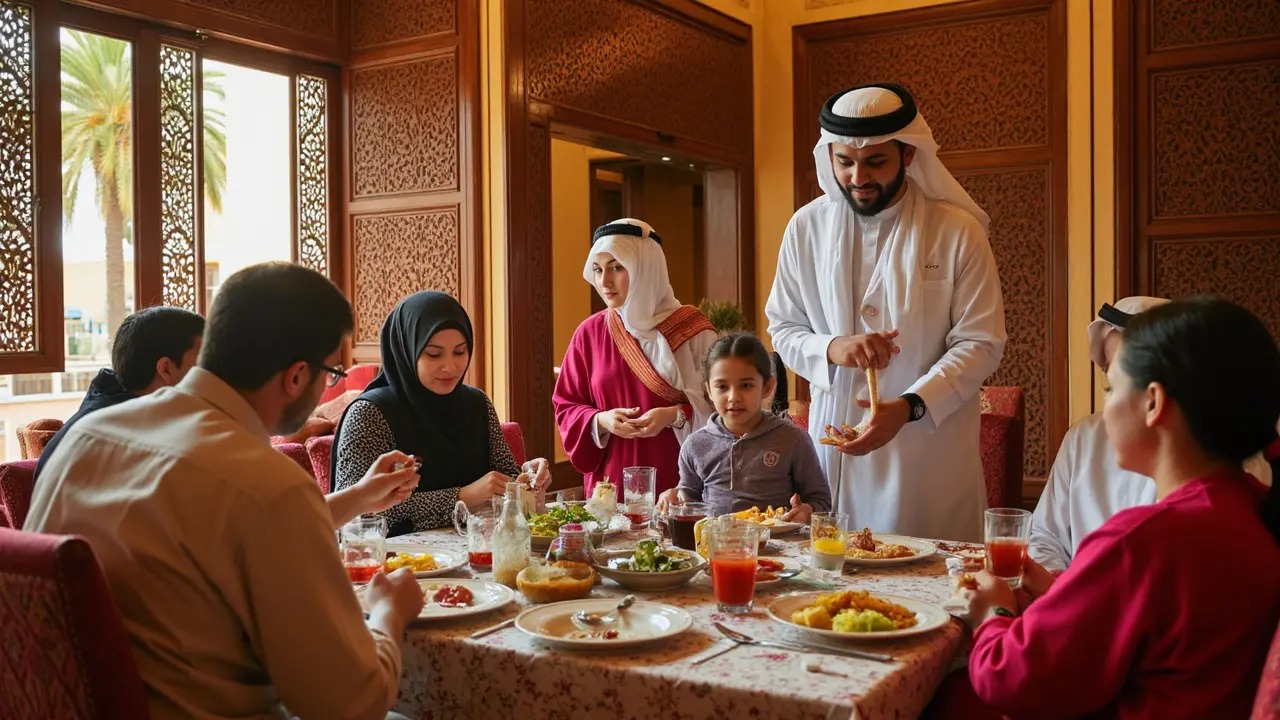
Mosques, Museums, and Heritage Sites
Dubai’s story goes way beyond new towers and shopping malls. The best way to get to know the city is by heading straight to its mosques, museums, and historic neighborhoods. You can’t talk about Dubai culture without mentioning the stunning Jumeirah Mosque. This mosque isn't just beautiful—it’s also one of the few in Dubai that actually welcomes non-Muslims for guided tours. Sign up for the Sheikh Mohammed Centre for Cultural Understanding’s morning visit. You’ll hear locals explain traditions, maybe even get to taste dates, and you can ask any question you like—nothing’s off limits.
For museums, the Dubai Museum (inside Al Fahidi Fort) is your first stop if you haven’t been already. Tucked inside Old Dubai, it mixes dioramas and artifacts so you can see how fast the city grew from a fishing village to a global business hub. But if you want something edgier, check out Etihad Museum in Jumeirah. The building’s sleek and it dives into the UAE’s story—the real, sometimes messy negotiations that led up to 1971, not just the glossy brochure version. If your kids tag along, there are interactive exhibits to keep them busy.
Don’t skip on heritage districts. Al Fahidi Historical Neighbourhood, right near the creek, is like walking into a time machine. The narrow alleys, wind towers, and hidden courtyards are perfect for wandering. Duck into the Coffee Museum for a break—or check out the art galleries. Al Shindagha Museum and the Heritage Village are also worth your morning. You’ll find live craft demos, old Emirati houses, and sometimes even storytellers who bring local legends to life.
- Dress modestly when visiting mosques or heritage areas—think covered shoulders and knees.
- Most historic sites are easy to reach with Ride Dubai or Dubai Metro; no need to stress about parking.
- Try to go early in the day or late afternoon, especially during the cooler months (November to March).
- If you’re after photos, sunrise at Al Fahidi is quiet and atmospheric.
Whether you’re hunting for history, art, or just want to see another side of Dubai, these sites give you a real sense of place that you just can’t get at The Dubai Mall.

